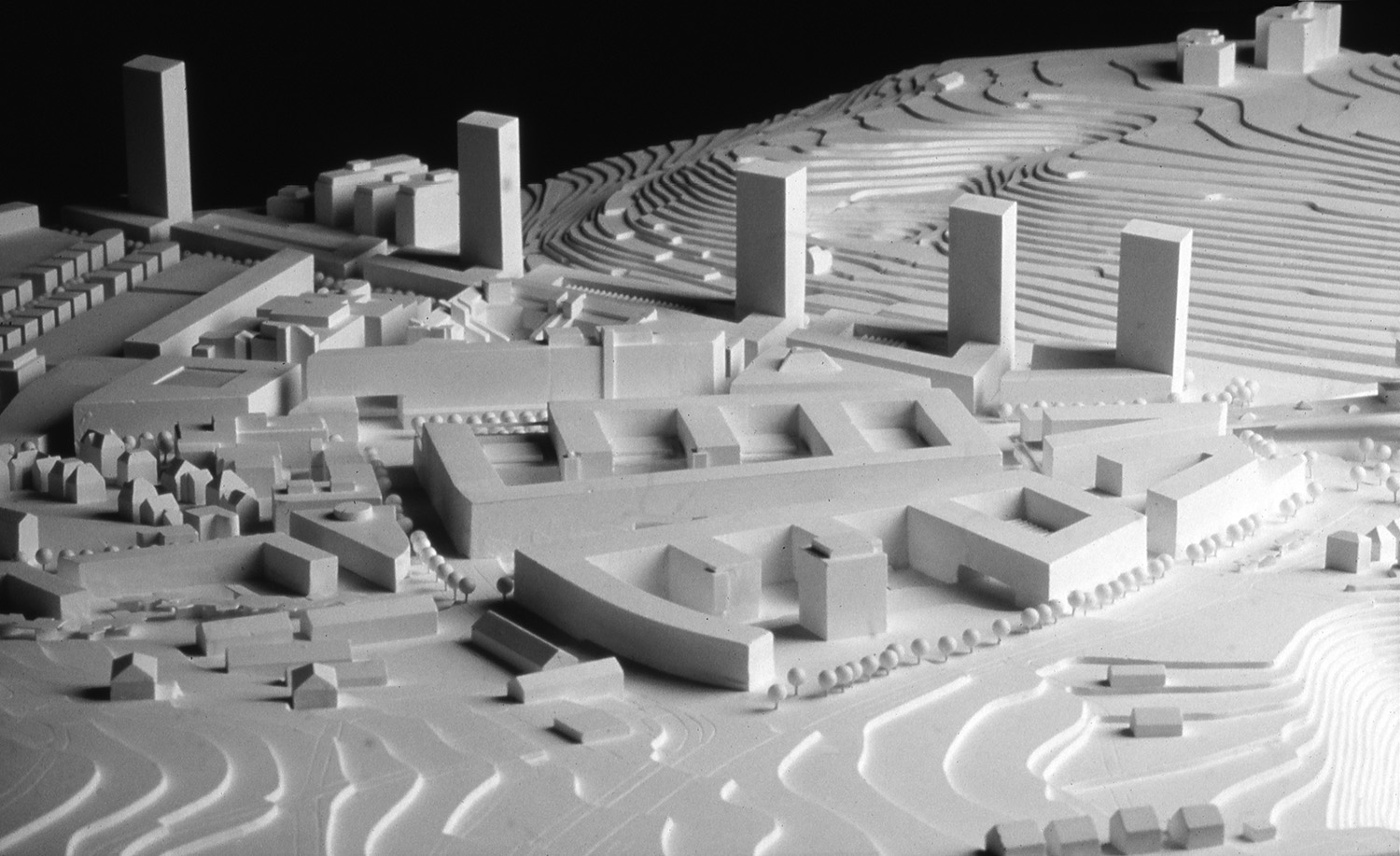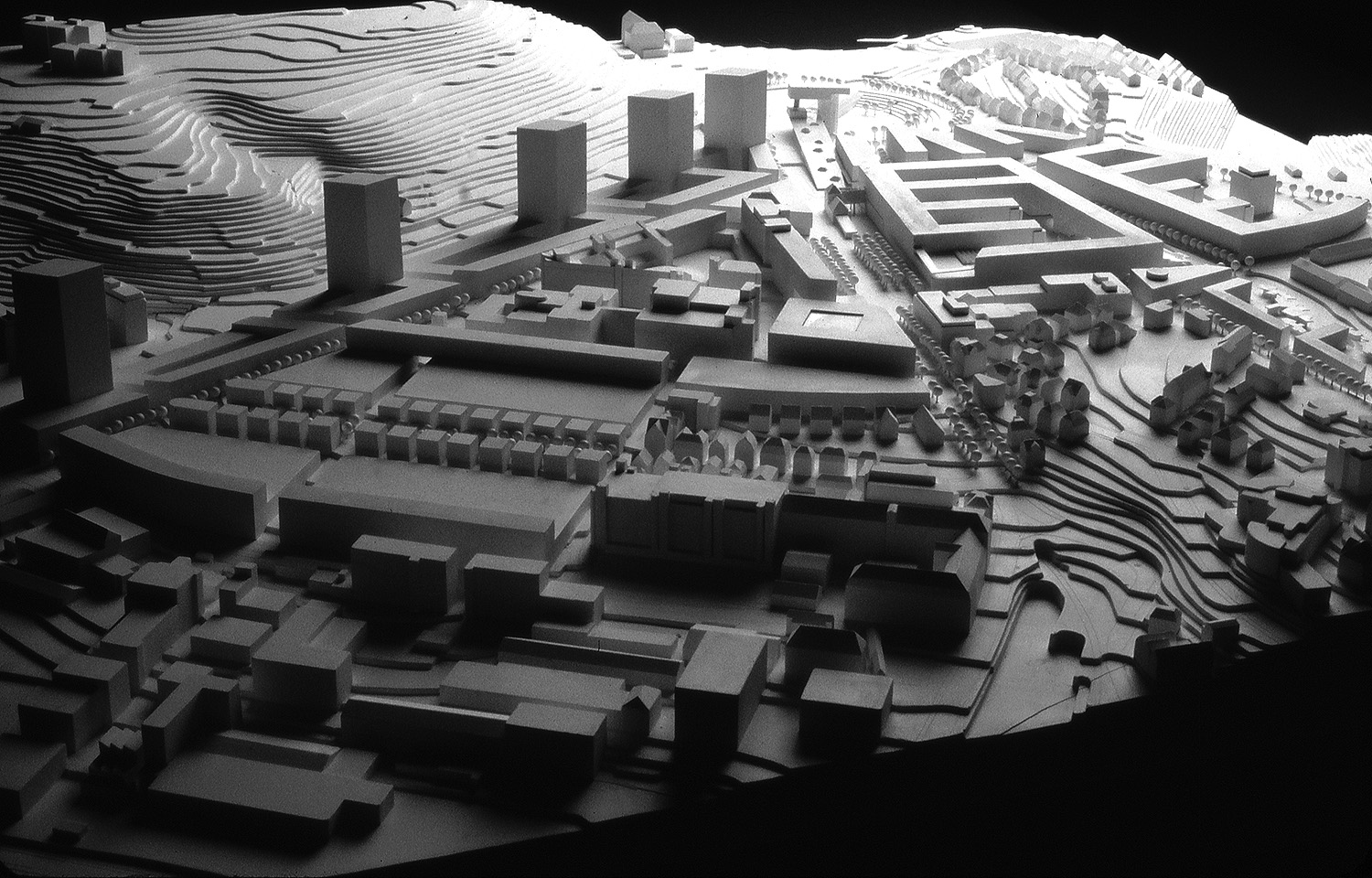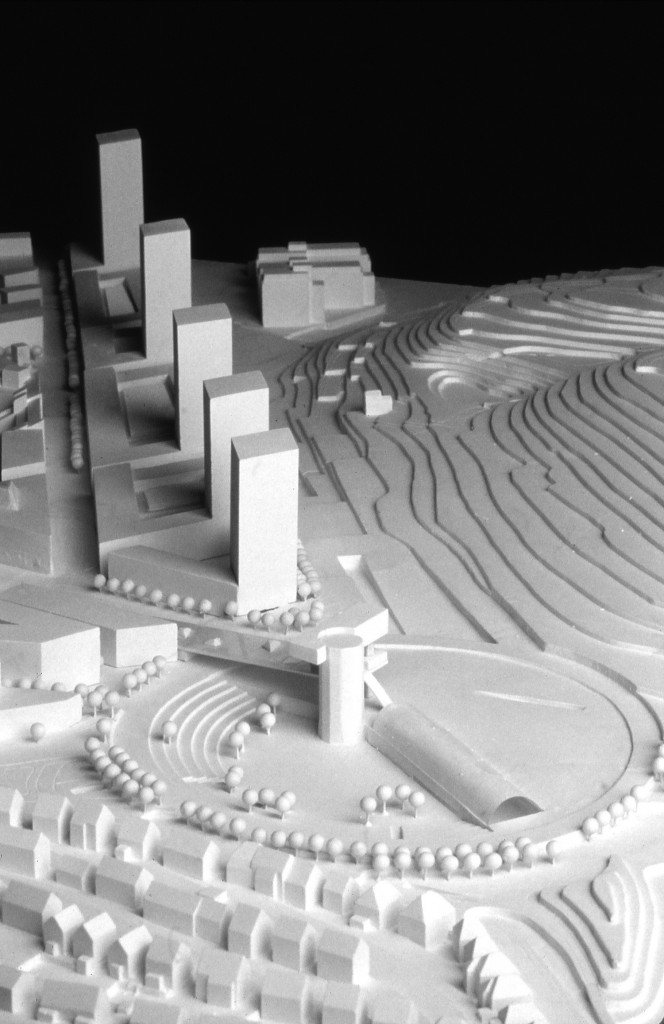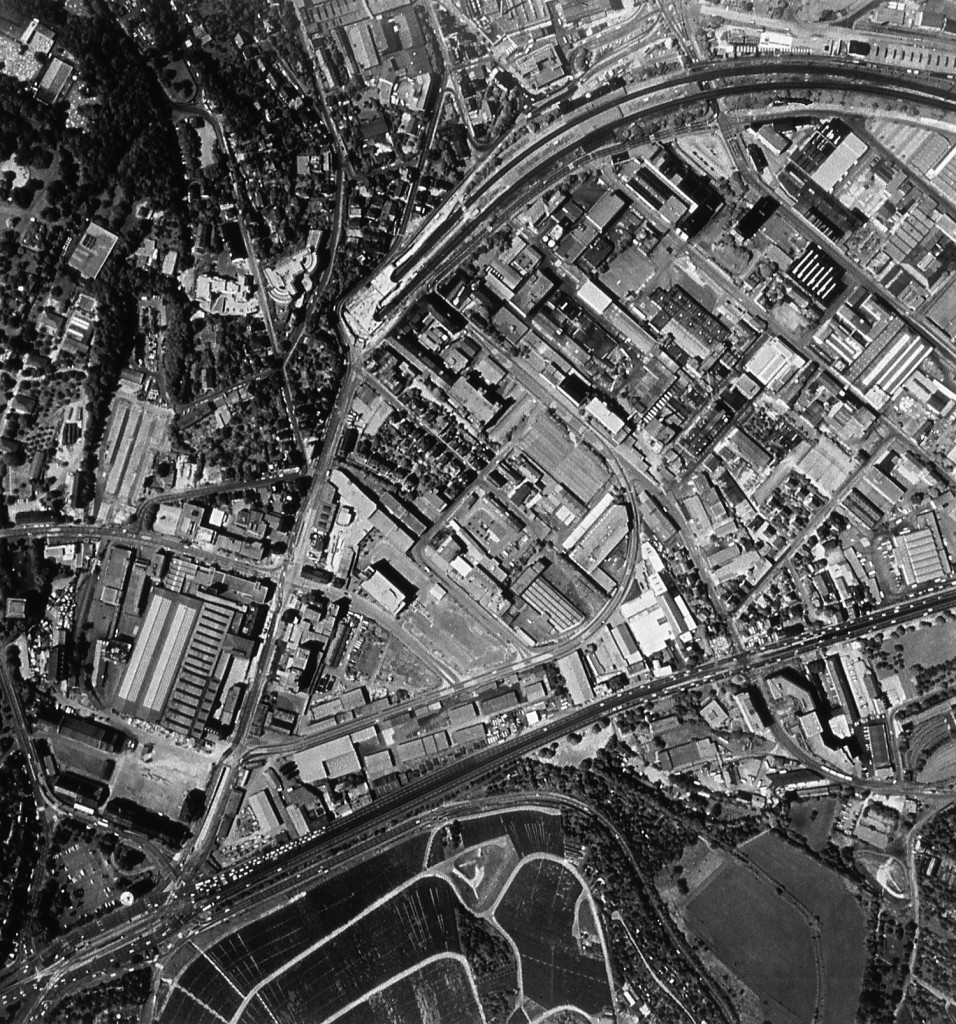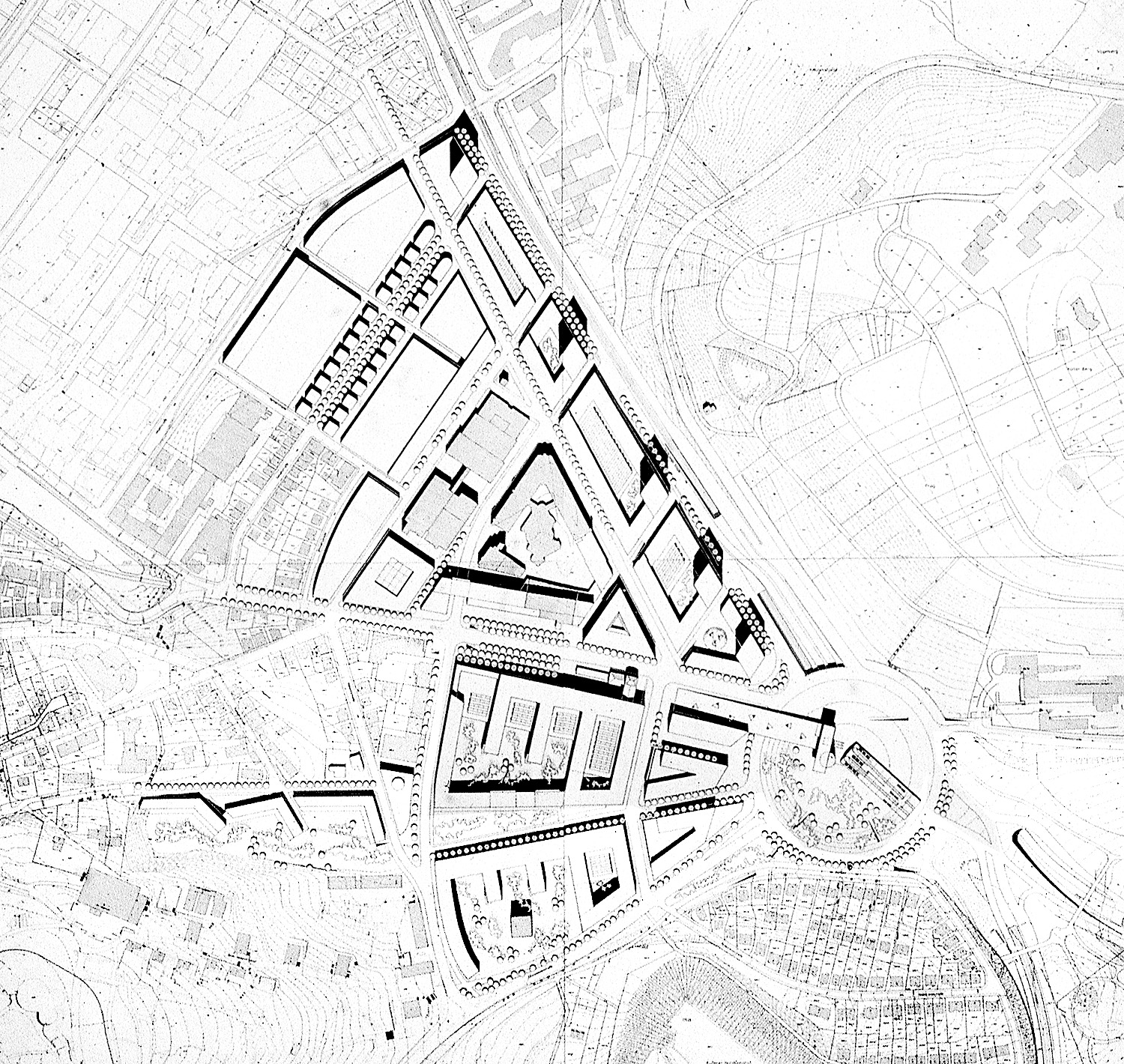The city of Stuttgart organized a limited competition to invite schemes for the decentralization of activities in the densely occupied urban core by means of the remodelling and introduction of new building in the area of the traditional northern Access to the city, passing through vineyards, gentle hills topped by private houses, obsolete industrial areas, and even an World War II bunker on the Summit of the small rise which commands the access.
The proposal redirects the traffic system towards an acceptance of its radical condition, made necessary by the geography, in relation to single point of passage through the valley. Thus, the convergence of the three major road accesses is organized i terms of their role in the overall urban scheme: one as the principal metropolitan route into the city, punctuated by five romboidal-plan high-rise towers, all rising to the same height, and set closer to one another as they approach the Summit of the hill; the second is the main Street of the existing nucleus, bounded by low-rise construction, in the form of mall, with department stores and offices. A basement gallery and raised platform connect with the old bunker, incorporated into belvedere building looking out over the city, and link, in the open and beneath a roof, the area’s two underground railway stations. The third is a pedestrian precinct, quieter tan the others, with a variable section, which naturally integrates into the old abandoned quarry and traces a course between the less compact spaces of the neighbouring garden city in the direction of the Weissenhof.
ORDENACIÓN URBANA, STUTTGART, Concurso Internacional de Ideas
La ciudad de Stuttgart convocó un concurso, por invitación, para descentralizar actividades de su colmado centro urbano mediante la remodelación y nueva construcción del área de la tradicional entrada de la ciudad por el norte, entre viñas, suaves colinas punteadas de casitas unifamiliares, áreas industriales obsoletas y hasta un antiguo búnker de la Segunda Guerra Mundial justo sobre el pequeño collado que le da acceso.
La propuesta reconduce la vialidad hacia la aceptación de su condición radial, obligada por la geografía, en tanto que único punto de paso al valle. Así, las tres grandes vías convergentes se organizan en función de su papel en el conjunto: una como principal acceso metropolitano a la ciudad, se puntúa con cinco rascacielos de planta romboidal, elevados a idéntica cota y que se colocan más próximas cuanto más cercano al alto collado; otra es la calle mayor del núcleo ya existente, que se acompaña de una gran edificación de baja altura, a manera de mall, con grandes almacenes y oficinas. Una galería subterránea y una plataforma elevada conectan con el antiguo búnker, subsumido en un edificio-ventana sobre la ciudad, y unen al aire libre y a cubierto las dos estaciones de metro de la zona. La tercera es una calle peatonal, más tranquila, con sección variable, que se va integrando con naturalidad a la vieja cantera en desuso y se dibuja entre los espacios menos compactos de la ciudad jardín adyacente hacia Weissenhof.
–
Autor / Architects: Jaume Bach, Gabriel Mora
Fecha del proyecto / Date of project: 1990
Cliente / Client: Ayuntamiento de Stuttgart
Ubicación / Adress: Stuttgart, Alemania

